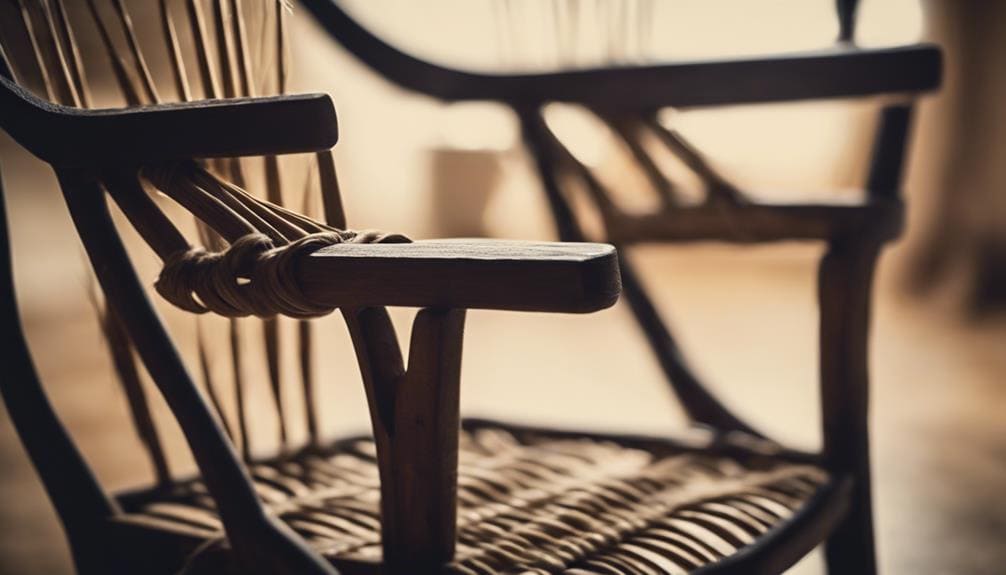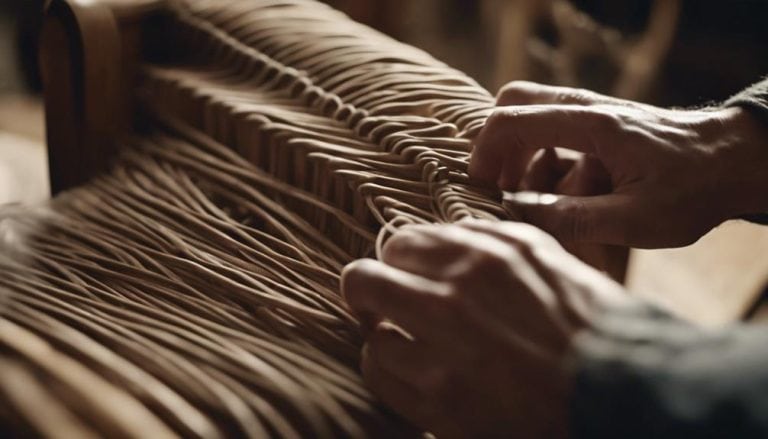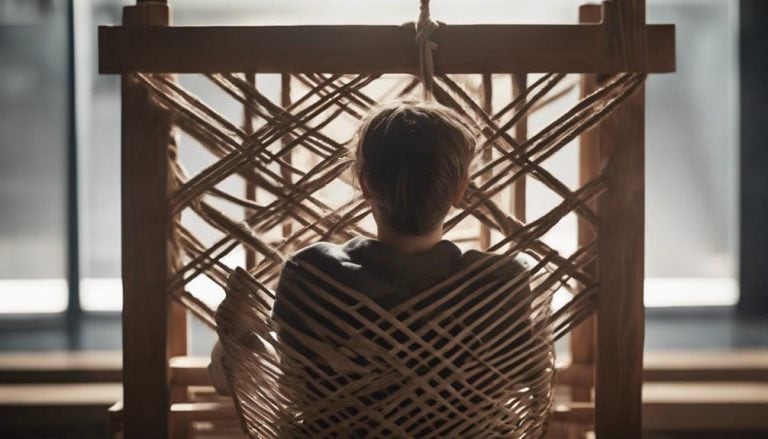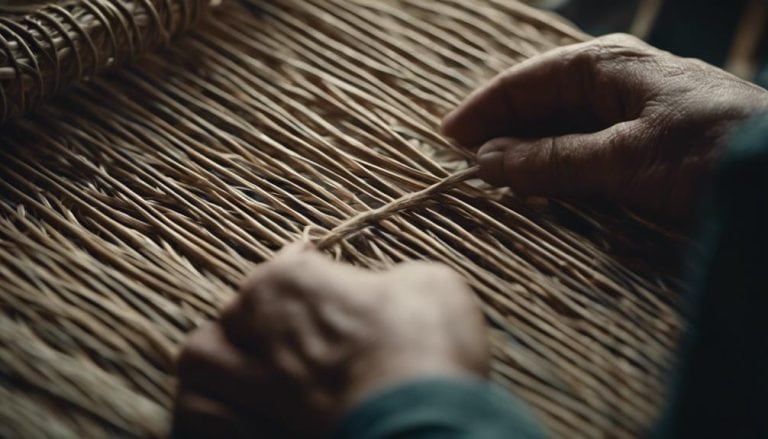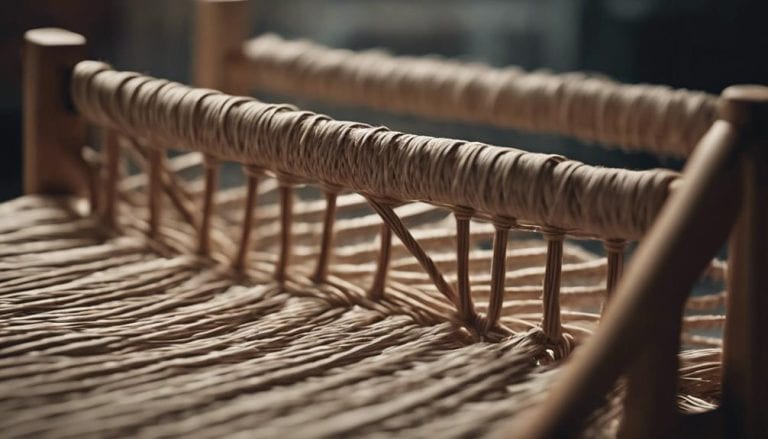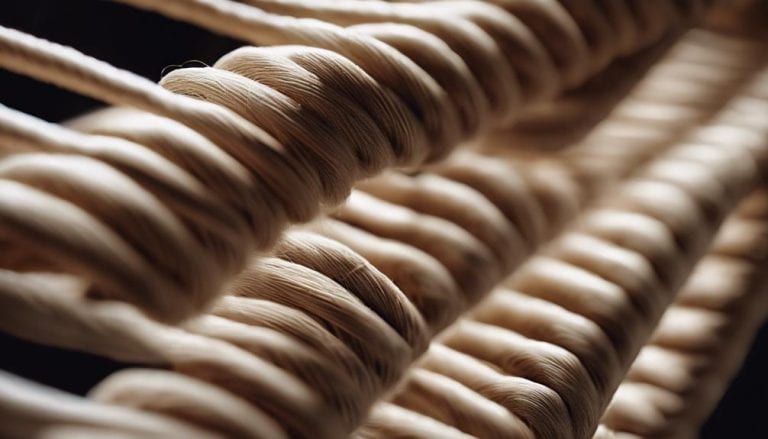Upcycling With Danish Cord and Rush Reeds
Many might not realize the versatility and beauty achieved through Danish cord and rush reeds when considering upcycling projects. These materials offer a unique way to transform old furniture into stunning pieces with a touch of sustainability.
The intricate weaving techniques and natural textures create a sense of craftsmanship that elevates the design of any item they adorn. Whether you’re a seasoned DIY enthusiast or someone looking to explore eco-friendly decor options, the world of Danish cord and rush reeds holds endless possibilities waiting to be discovered.
“Upcycling with Danish cord and rush reeds involves creatively repurposing these materials for sustainable and stylish home decor projects, showcasing eco-friendly design innovation.” This process transforms discarded items into new, functional pieces, promoting environmental consciousness and artistic expression.
Key Takeaways
- Danish cord and rush reeds offer durability and style when upcycling furniture.
- Revive old chairs with intricate weaving techniques using Danish cord.
- Rush reeds infuse eco-conscious charm and timeless elegance in furniture design.
- Creative upcycling ideas include weaving Danish cord for unique home decor pieces.
Benefits of Using Danish Cord
Danish Cord stands out as a versatile and robust material that elevates the art of seat weaving to a whole new level. Its strength and durability, stemming from being a 3-ply twisted paper rope, make it a prime choice for Danish modern furniture.
Unlike other materials like Fiber Rush, Danish Cord brings unique weaving techniques to the table, enhancing chair seats’ strength and beauty. One of its distinctive features is wrapping it around Danish L Nails under the chair frame, ensuring a secure attachment that guarantees longevity.
The historical evolution of Danish Cord attests to its significance in traditional seat weaving, showcasing craftsmanship that has stood the test of time. Educational initiatives further aim to increase customer appreciation for the diverse techniques of seat weaving, with Danish Cord playing a pivotal role in this narrative of artistry and resilience.
Techniques for Weaving Rush Reeds
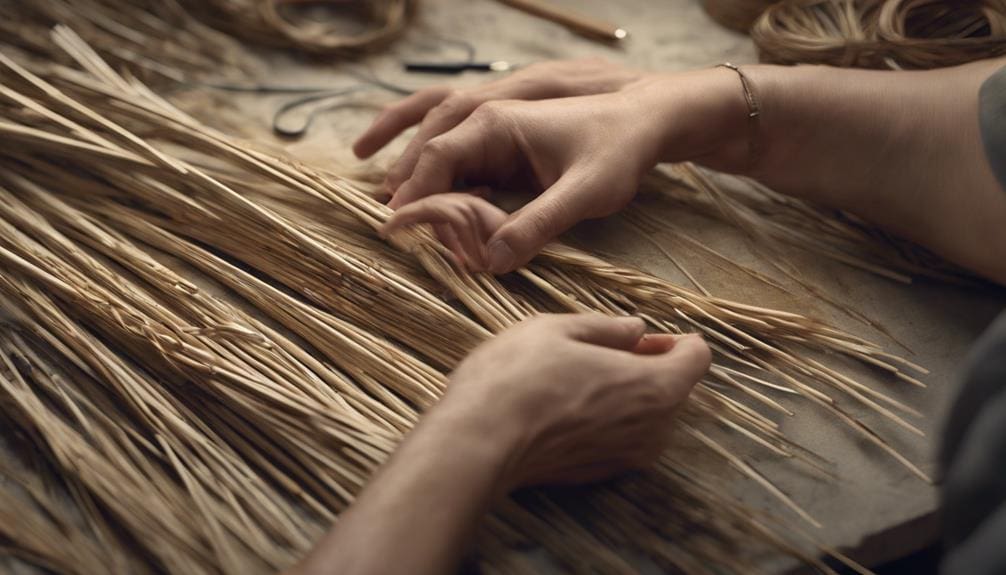
Weaving rush reeds involves soaking, measuring, cutting, and securing these eco-friendly materials onto a chair frame using an awl. The key to creating a new woven seat with rush reeds lies in the precision of each step. As the rush reeds are soaked in water, they become pliable, allowing easier manipulation and weaving.
Careful measurement ensures that the reeds fit snugly within the frame, providing comfort and durability. When cutting the rush reeds, attention to detail is essential to prevent fraying and ensure a clean finish. Securing the reeds onto the chair frame with an awl requires strength and finesse, as each strand must be tightly woven to withstand daily use.
Upcycling Old Furniture With Danish Cord
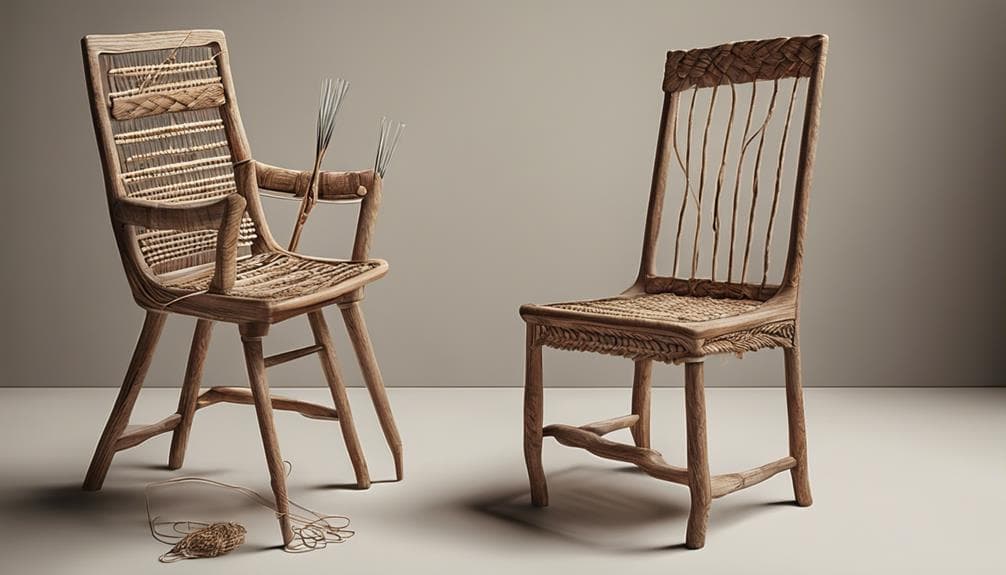
Breathing new life into worn-out furniture, Danish cord offers a stylish and sustainable solution for upcycling old chairs with modern elegance. As I delve into transforming furniture through Danish cord, the process unveils a world where creativity meets craftsmanship.
Here’s a glimpse into the magic of upcycling old furniture with Danish cord:
- Intricate Weaving: Danish cord weaving techniques intricately revive old chair seats, adding a modern flair.
- Durable Elegance: The durable nature of Danish cord ensures that your upcycled chairs not only look stylish but stand the test of time.
- Functional Art: Transforming outdated chairs into functional art pieces, each piece tells a unique sustainability story.
- Preservation of Design: By preserving the original design of the furniture, Danish cord upcycling maintains a sense of heritage while infusing a contemporary vibe.
- Craftsmanship Showcase: Upcycling with Danish cord allows for a showcase of exquisite craftsmanship, elevating your decor with a personal touch.
Sustainable Styling With Rush Reeds
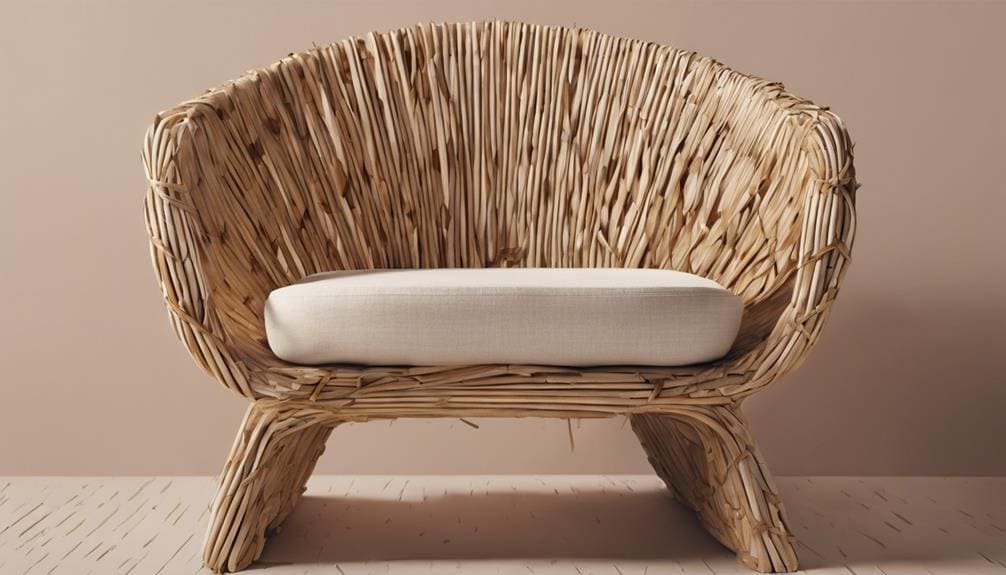
Incorporating rush reeds into your sustainable design endeavors infuses a touch of rustic charm while aligning with eco-conscious living practices. These eco-friendly materials breathe new life into furniture pieces, offering durability and a biodegradable aspect that resonates with the essence of green initiatives.
Rush reeds provide excellent ventilation, ensuring comfort in chair seats and bring a unique aesthetic to your space, adding a sense of timeless elegance. Maintaining rush reeds is a breeze, requiring simple care routines that enhance their longevity and keep them looking pristine.
Creative Ideas for Danish Cord Upcycling
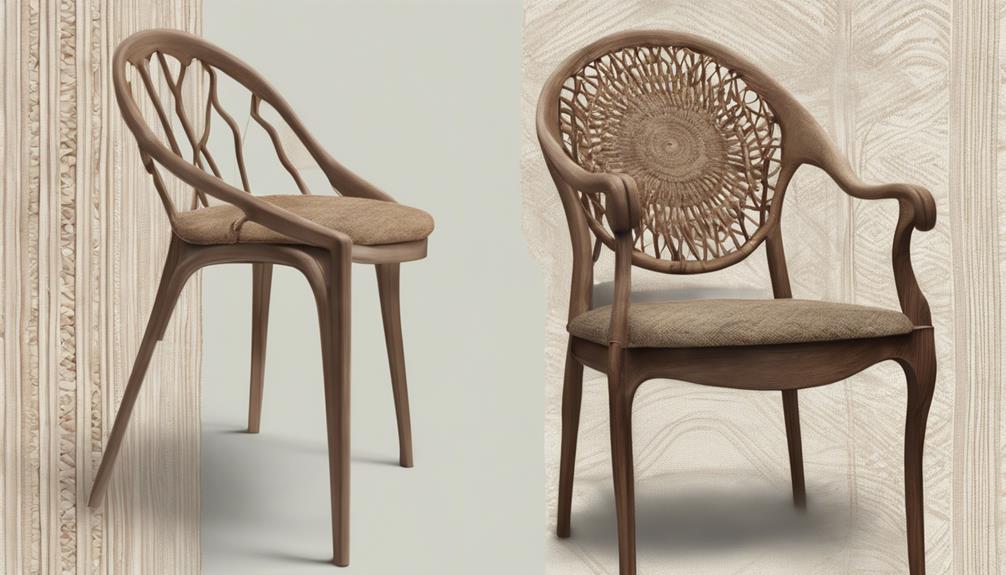
Embrace the art of transforming Danish cord into stunning, functional home decor pieces through creative upcycling projects that add a unique touch to your living spaces. The possibilities are endless when it comes to upcycling Danish cord.
Here are some innovative ideas to inspire your next DIY project:
- Create a stylish chair seat by weaving Danish cord in a classic basket weave pattern, adding a touch of elegance to your dining area.
- Craft a one-of-a-kind headboard by intertwining Danish cord in an intricate design. This will bring a cozy and artisanal vibe to your bedroom.
- Design decorative wall hangings using Danish cord in varying colors to form geometric shapes, providing a modern and eye-catching accent to your walls.
- Weave Danish cord around a basic mirror frame to give it a bohemian flair, elevating the look of your living room or entryway.
- Experiment with different weaving patterns and color combinations to customize plant hangers, infusing your indoor garden with a chic and personalized touch.
Frequently Asked Questions
Is Fiber Rush the Same as Danish Cord?
Comparing materials, Fiber Rush and Danish Cord differ. Fiber Rush is twisted paper, while Danish Cord is a 3-ply rope. They’re not the same. I’d choose Danish Cord for strength and style in furniture restoration.
How Long Does Danish Cord Last?
The Danish cord’s durability is impressive; it can endure for decades with care. I’ve witnessed this firsthand – my seat has lasted over 20 years! With regular maintenance, Danish cord can outlast many other materials.
What Is the Use of Danish Cord?
I create vibrant, durable chair seats with Danish Cords. Its strength and beauty elevate the look of the furniture. Incorporating colorful designs, Danish Cord’s unique weaving techniques set it apart, enhancing the overall aesthetic appeal.
What Is the Difference Between Laced and Unlaced Danish Paper Cord?
Color variations in laced vs. unlaced Danish cord impact design. The laced cord showcases twists for a decorative touch, ideal for traditional styles. Unlaced cord offers a smoother look, perfect for modern aesthetics. Choose based on desired visual impact and style preference.
Conclusion
As I weave Danish cord and rush reeds, I feel like a sculptor shaping a masterpiece from discarded materials. Each strand and fiber come together like notes in a symphony, creating harmony and beauty in upcycled furniture.
Embracing these eco-friendly techniques transforms old chairs into new treasures and embodies a commitment to sustainability and craftsmanship. Let’s continue to weave a sustainable future, one chair at a time.

